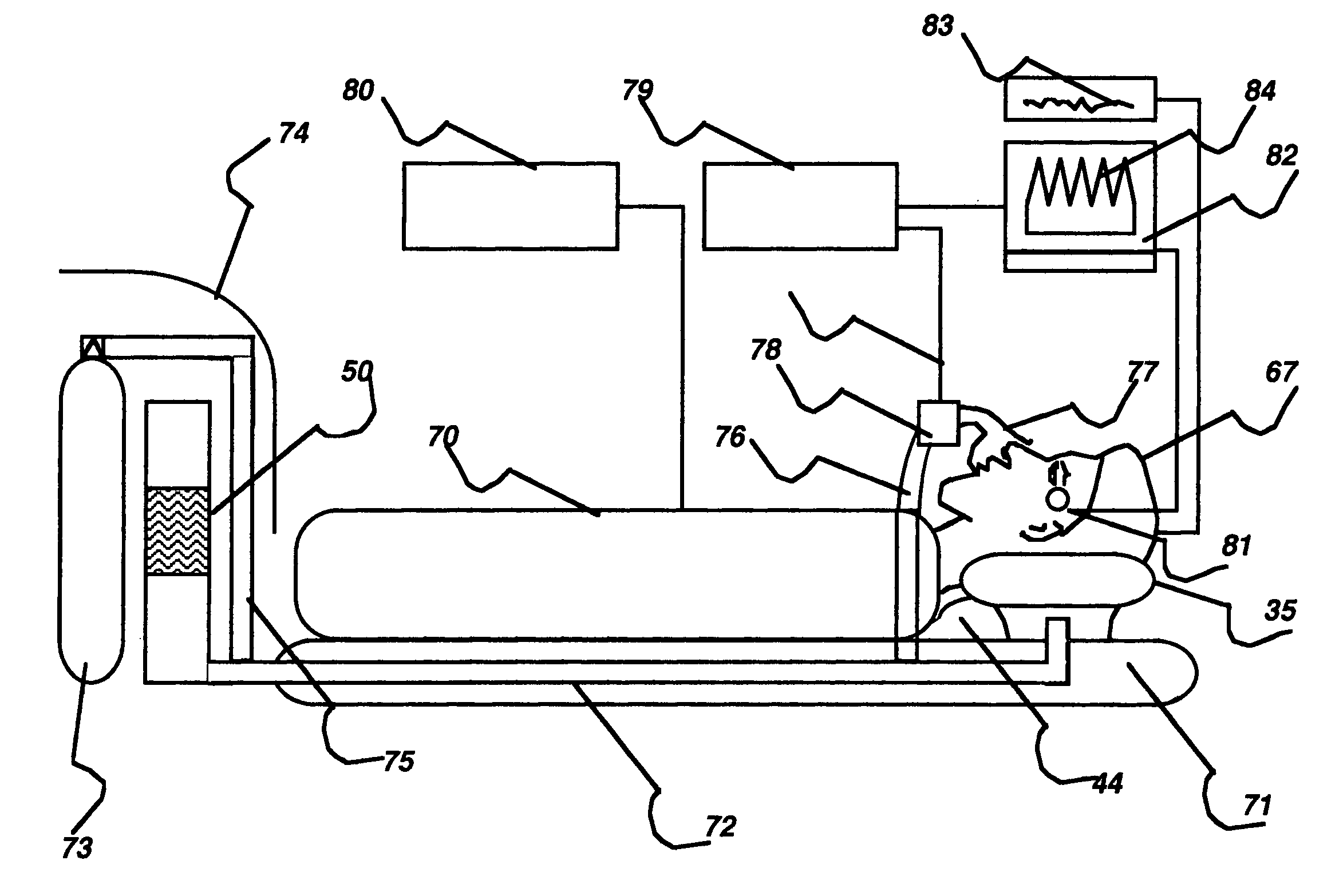The mechanisms of the effect of
hyperthermia on the brain remains to be fully elucidated, however, there is evidence to indicate that even mild increases in temperature may contribute to neurological deficits.
Whole body hypothermia is usually invasive, not only takes a significant amount of time, but also subjects the patient to deleterious effects of hypothermia including cardiac arrhythmias, coagulation problems, increased susceptibility to infections, and problems of discomfort such as profound
shivering.
This method is an extremely
invasive procedure that subjects vast quantities of the patients' blood to pumping for an extended length of time.
One clear
advantage of such devices and methods is that, they may avoid the problems associated with external pumping of blood, however, the method is still invasive and do not eliminate the difficulties that arise when the entire body is subjected to hypothermia.
However, the insulating qualities of the
skull make it difficult to effectively lower brain
core temperature, and the
blood flow that ma; fail to provide sufficient
heat transfer circulation to the brain itself when the surface of the head is cooled.
In critical conditions there may be loss of pulse or inadequate
perfusion, as a result core organs cools via direct tissue
thermal conduction.
Unfortunately, the speed of cooling with these techniques is too slow to prevent lethal outcome due to
ischemic reperfusion injury to vital organs, including the heart and brain.
However, the '811 patent describes an invasive method for delivery of
slurry for cooling of the brain.
In most cases, prior art lacks flexibility and portability and their application requires use in a controlled clinical setting.
This limits their use particularly at sites of accidents by
emergency rescue teams, as a result, hypothermia is usually applied much later on arrival to specialized centers with a controlled clinical environment after considerable damage has been done and efforts aimed at
neuroprotection at such a
late stage might be least rewarding.
This limits the scope of application to only selected centers in highly industrialized countries.
Prior art in most cases is highly invasive with serious adverse effects.
The risk benefit-analyses does not permit use in many instances where application of hypothermia could have otherwise been useful.
Prior art requires extensive expensive equipment usually requiring trained personnel.
This limits availability in remote centers where there are first responders to accidents.
Prior art lacks specificity in operational mechanism.
This approach is countered by the body's own mechanisms of
thermoregulation and therefore is rendered ineffective or achieves very minimal effects at the brain sites of regulation even during extensive high risk
whole body exposures.
Prior art undesirably cools other vital organs such as the lungs and thereby promoting the growth of infection, as a result pneumonia is a frequent complication of hypothermia.
However, these effects tend to reverse on rewarming.
Prior art does not combine the benefits of CSF drainage with the added benefit of
neuroprotection with hypothermia.
Furthermore, prior art does not address stress
related factors after injury to the brain.
Prior use of hypothermia to prevent
spinal cord injury has demonstrated clear benefits but there are methodological drawbacks limiting application of this approach in patients.
It has been shown that subdural and epidural infusion cooling produced localized
spinal cord hypothermia concurrently with uniformly distributed pressure increases and can result in
spinal cord ischemia, as disclosed by Meylaerts S A, Kalkman C J, De Haan P, et al., in an article entitled “Epidural versus subdural spinal cord cooling: cerebrospinal
fluid temperature and pressure changes”, published in Ann Thorac Surg, vol.
Prior art has limited means to effect changes in cerebrospinal fluid and the acid-base balance in the brain.
 Login to View More
Login to View More  Login to View More
Login to View More 


